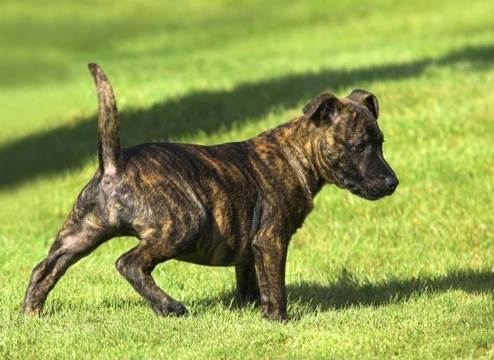
Some Gorgeous Brindle Dog Breeds
Brindle coloured dogs are a very popular choice of pets, with their impressive tricolour coats. The brindle pattern consists of a tiger-stripe or patched pattern that usually consists of black, gold and a third colour, but various other colour combinations are possible too. A great many different dog breeds can be found in the brindle colour and pattern combination, and we will introduce you to some of these later on if brindle is the colour for you. Brindle coats are also usually short and straight, making them among the easiest to care for.
However, only one breed of dog is specifically bred for the brindle colour only, and this is the rather unusual Treeing Tennessee Brindle dog, an unusual sight within the UK! Read on to learn more about this unique brindle breed, plus some other brindle dogs that you might want to consider!
Treeing Tennessee Brindle
The Treeing Tennessee Brindle is always produced with a brindle coat, as the name implies! They originate from Tennessee’s Ozark mountain range, and are bred as hunters with a very unique way of going about things.
The Treeing Tennessee Brindle identifies their prey and then works to herd it and chase it up a tree, where it will hold it until the handler arrives. The breed is descended from the wild brindle dogs of the region, and today, the coat colour itself is highly prized, and has its own breeders association to promote it.
Staffordshire bull Terrier
The Staffy can be found in more or less any colour combination you can think of, and brindle is just one of them! Even within the brindle colour, there is a huge degree of variation possible across the breed, and as the Staffordshire Bull Terrier is such as popular pet in the UK, it shouldn’t be too hard to find a brindle to join your family.
Boxer dog
The brindle pattern is one of the main boxer colours, and generally consists of black and gold with white hints, often on the paws and the neck. Boxer dogs are also popular within the UK, but not quite as prolifically bred as the Staffy, so you may have to join a waiting list if you are hoping to buy a brindle Boxer puppy!
Cardigan Welsh Corgi
The Welsh Corgi comes in two different distinct breeds: The Pembroke Welsh Corgi, and the Cardigan Welsh Corgi. The Pembroke Welsh Corgi is the more common of the two types, and the Cardigan Welsh Corgi’s numbers are in fact on the decline, so you might have to travel pretty far from home to find one offered for sale!
The Cardigan Welsh Corgi is the older of the two breeds, and is the type with the longer tail. They are petite with short, low bodies, and are equally happy in either the city or the country. The Cardigan Welsh Corgi can be found in black, blue merle, red or sable as well as brindle, and given the relative rarity of the breed as a whole, brindles are fairly uncommon.
Boston Terrier
The Boston Terrier is a cute, short and stocky little dog, with pointy bat’s ears and a squashed-looking face. They share some physical similarities with the French Bulldog, if you are not familiar enough with the two breeds to tell the difference!
The most common coat pattern for the Boston Terrier is black and white in a kind of tuxedo pattern, but they can also be seen in a “seal” coat, or in brindle. Boston Terriers are relatively popular within the UK, but you may have to join a waiting list if you have your heart set on a brindle.
Dachshund
The Dachshund is somewhat more widely known as the “sausage dog,” thanks to their elongated bodies and very short legs! Despite their small and somewhat comical appearances, they are fearless and confident hunters, and were actually bred to hunt badgers, quite the imposing opponent! The long body and short legs of the Dachshund allows them to follow badgers into their burrows and flush them out, or kill them. As pets they are spirited, plucky and great fun!
The Dachshund is one of the few breeds that exhibits a brindle variety that is not always shorthaired; the Dachshund can in fact be either shorthaired, longhaired or wire haired. As well as the brindle variant, the Dachshund can be seen in a wide range of other colours too.
Mixed breeds and cross breeds
Brindle is also one of the more common colours for dogs of mixed ancestry, as a great many different dog breeds carry the gene for brindle colouration, whether they display it or not. Added to this, the crossing of various different breeds also often introduces a brindle variant, which might not have been present in either of the parent dogs.
If you are fairly open-minded about what type of dog you would like to own but have your heart set on a brindle, cross breed and mixed breed dogs are definitely worthy of a second look!



